-
Specializing in:
- Indoor Electric Radiant Floor Heating
- Solar Air And Water Heating Systems
- Electric Snow And Ice Melt for Heated Driveway
- Soil Heating For Green Houses
- U.S. Floor Heating Quote
- U.S. Solar Heating Quote
- U.S. Snow Melting Quote
- U.S. Soil Heating Price List
- U.S. Infrared Inspection Price List
- Heating Your Floor with Heated Floors
- Get Free Energy with Solar Space Heating
- No More Shovel with Snow Melting
- Thermal Imaging Infrared Inspection
- Plant Year Round with Soil Heating
- Reduce Your Carbon Footprint
- Education Center
- Sitemap
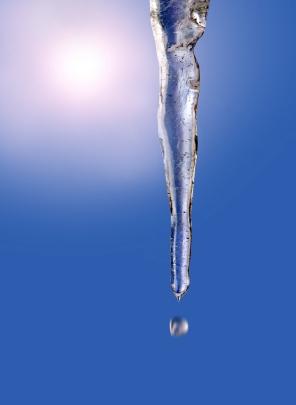
Electric Snow Melting
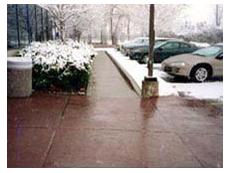 Put Away the Shovel with Electric Snow Melting. Snow melting is the process of eliminating snow and ice build up from an outdoor surface, usually walk ways and driveways, using an independent heating source designed specifically for the application, resulting in a heated driveway. The Electric Snow Melting for a heated driveway is very similar to radiant floor heating, which is discussed on our Heated Floors page.
Put Away the Shovel with Electric Snow Melting. Snow melting is the process of eliminating snow and ice build up from an outdoor surface, usually walk ways and driveways, using an independent heating source designed specifically for the application, resulting in a heated driveway. The Electric Snow Melting for a heated driveway is very similar to radiant floor heating, which is discussed on our Heated Floors page.
Electric snow melting systems are common among businesses and homes in northern states, where snow and ice covered walkways can pose a safety concern, but there is a rising trend in installing them in home applications as well. Installing a system eliminates the need to use potentially damaging deicing chemicals, or perform back breaking shoveling.
Heated driveway
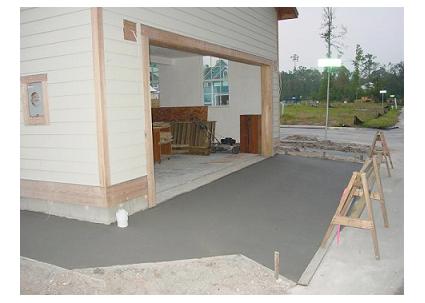 Similar to radiant floor heating systems, snow melting systems come in two different versions: hydronic (using liquid to heat the surface), and electric snow melting (using heated cables). The systems install and work essentially the same, but there are differences in processes and costs.
Similar to radiant floor heating systems, snow melting systems come in two different versions: hydronic (using liquid to heat the surface), and electric snow melting (using heated cables). The systems install and work essentially the same, but there are differences in processes and costs.
Hydronic Systems
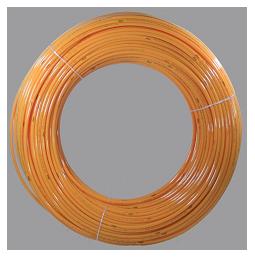 These systems use a closed loop tubing made of flexible polymer to circulate a mixture chemical, usually water and propylene glycol (antifreeze). Basically, it works very similar to how a radiator functions in a car. The mixture is heated to temperatures of up to 180 degrees Fahrenheit with a boiler, passed through the tubing, and returned to the boiler to repeat the cycle. These systems are better suited for larger projects, as they can be ran off of any energy source (gas, wood, electricity, and even solar), and running costs are usually lower.
These systems use a closed loop tubing made of flexible polymer to circulate a mixture chemical, usually water and propylene glycol (antifreeze). Basically, it works very similar to how a radiator functions in a car. The mixture is heated to temperatures of up to 180 degrees Fahrenheit with a boiler, passed through the tubing, and returned to the boiler to repeat the cycle. These systems are better suited for larger projects, as they can be ran off of any energy source (gas, wood, electricity, and even solar), and running costs are usually lower.
Electric Snow Melting Systems for Heated Driveway
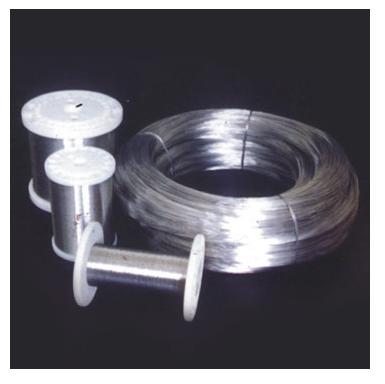 Electric Snow Melting systems run off of electrical resistance cables, using electric energy to generate heat. Electric systems require far less equipment to run, as there is no need to install a boiler, return manifolds, or circulating pumps; all you need is an electrical source and a controller. Along with this, the system is quicker to respond and warm up, since it is electric based. These systems are perfect for smaller projects, such as tire treads of a heated driveway, or a front walkway. Running costs will vary from location to location, depending on local energy rates, amount of snowfall, etc.
Electric Snow Melting systems run off of electrical resistance cables, using electric energy to generate heat. Electric systems require far less equipment to run, as there is no need to install a boiler, return manifolds, or circulating pumps; all you need is an electrical source and a controller. Along with this, the system is quicker to respond and warm up, since it is electric based. These systems are perfect for smaller projects, such as tire treads of a heated driveway, or a front walkway. Running costs will vary from location to location, depending on local energy rates, amount of snowfall, etc.
Installation
No matter which system you choose, installation will remain relatively the same for a heated driveway project. It is highly recommended that the owner use a professional contracting service to install the system. Both hydronic and electric systems are ideally installed in new heated driveway projects, where the cement can be poured over it without much hassle. Though the electric snow melting system can be installed in existing surfaces, it is recommended that a contractor use an electric system, as the cabling is less thick, requiring less expansive grooves to install. Also, it is suggested that an insulation material be placed beneath the cabling, to reduce heat loss below the surface.